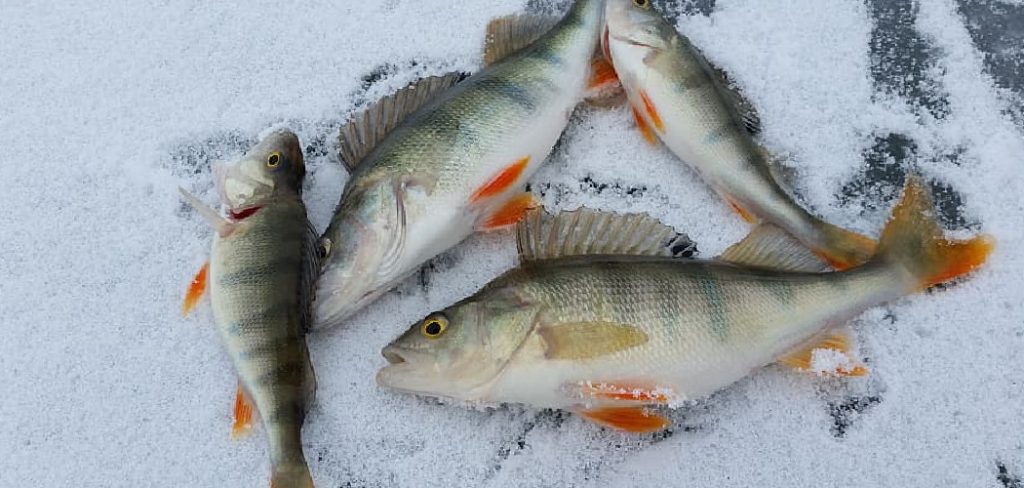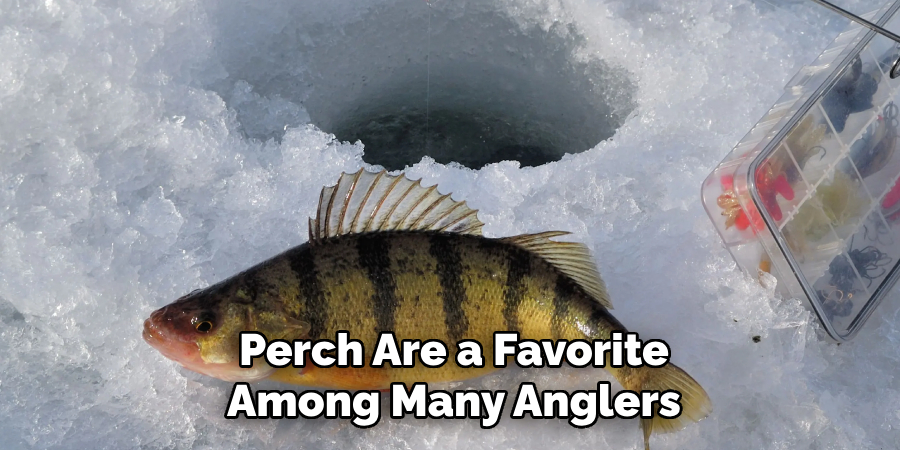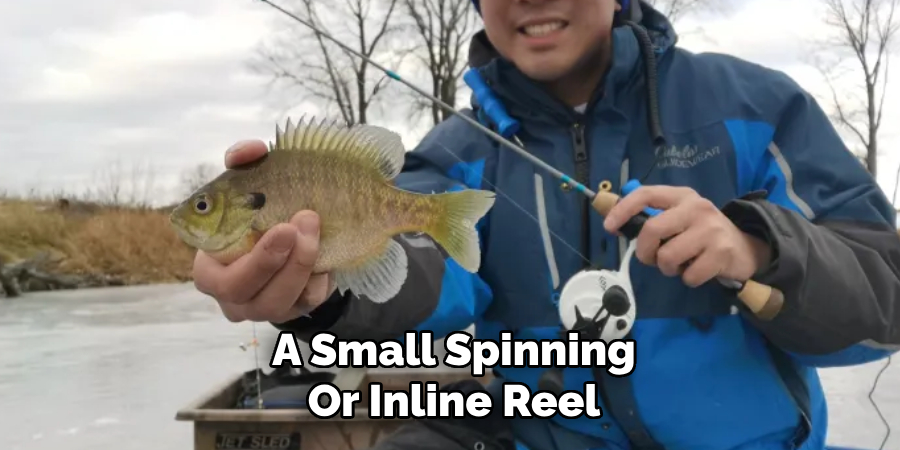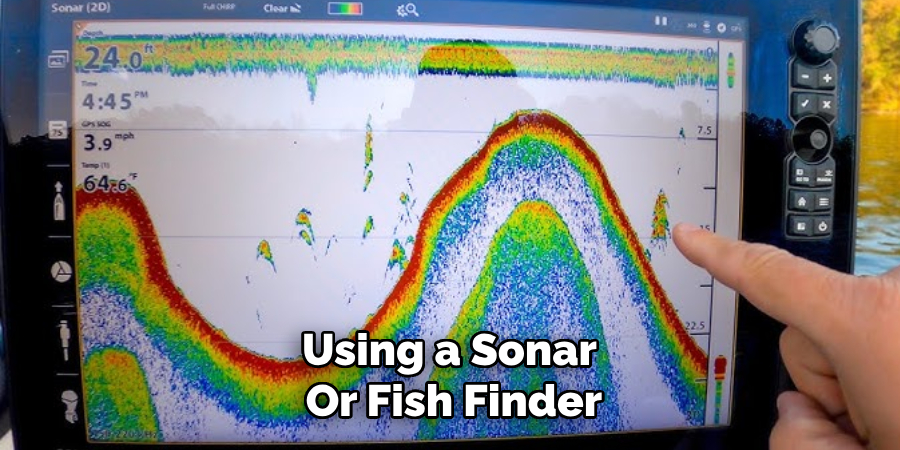Ice fishing for perch is an exciting and rewarding winter activity popular among anglers of all skill levels. These feisty fish are known for their aggressive bites and can often be found in large schools, making them a favorite target during the colder months.
Success requires the right combination of gear, technique, and location, as well as a good understanding of perch behavior during winter. Whether you’re a seasoned ice angler or just starting out, this guide on how to catch perch ice fishing will provide valuable tips to help you catch perch and make the most of your ice fishing experience.

Why Perch?
Before we dive into the details of how to catch perch ice fishing, let’s take a closer look at why anglers love targeting these fish in the winter. Here are some reasons that make perch a popular choice for ice fishing:
Aggressive Bites:
Perch are known for their aggressive feeding behavior, making it easy for them to catch on a variety of baits and lures. This makes them an ideal target for ice fishing, where it can be challenging to entice fish with limited movement and presentation options.
Delicious Table Fare:
Perch are a favorite among many anglers for their delicious taste. They have firm, white flesh and are often compared to crappie or walleye in terms of flavor. Plus, catching your own perch on the ice makes for a fresh and satisfying meal.

Easy to Find:
During the winter months, perch tend to congregate in large schools near shallow areas of lakes or rivers. This makes them easier to locate and target compared to other species that may be more spread out over deeper waters.
Needed Equipment’s
Before heading out on the ice to catch perch, it’s essential to have the right gear. Here are some essentials that you’ll need for a successful perch ice fishing experience:
Ice Fishing Rod:
A specialized rod designed for ice fishing is a must-have for any angler. These rods are shorter and more sensitive than regular fishing rods, making it easier to detect bites and handle fish in colder temperatures.
Ice Fishing Reel:
A small spinning or inline reel is the most common choice for ice fishing. It should have a smooth drag system and be able to handle light lines, as perch can be finicky and won’t bite if they feel too much resistance.
Ice Fishing Line:
For perch ice fishing, it’s best to use monofilament or fluorocarbon lines in a 2-4lb test. These lines are more forgiving and less visible in the clear winter water, which can increase your chances of getting bites.
Tip-Ups:
Tip-ups are an essential tool for targeting larger perch or when using live bait. They allow you to fish multiple holes at once and provide a visual indicator when a fish takes the bait.
Ice Auger:
An ice auger is necessary for drilling holes in the ice and creating a fishing spot. Hand-powered or gas-powered options are available, depending on your preference and budget.

8 Step-by-step Guidelines on How to Catch Perch Ice Fishing
Step 1: Find the Right Location
The first and most important step to catching perch ice fishing is finding the right location. During winter, perch tend to gather near areas with consistent food sources, such as weed beds, drop-offs, and underwater structures like rock piles or sunken trees. Start by drilling test holes in these areas to check the depth and bottom composition using a sonar or fish finder. Perch are often found in depths ranging from 10 to 30 feet, depending on the time of day and lake conditions.
Early morning and late afternoon are prime times as perch tend to be more active and closer to the shallows during these periods. Once you locate a school of perch, focus your efforts there, as they rarely travel far from their food source.
Step 2: Use Small Baits and Lures
When it comes to bait and lures for perch ice fishing, smaller is always better. Perch have small mouths, so using tiny jigs or spoons in the 1/16 to 1/8 oz range is ideal. Popular colors include gold, silver, and chartreuse. You can also tip your lure with a maggot, wax worm, or small minnow for added attraction.
Other effective baits for perch include soft plastics like grubs or worms on a jig head, as well as live bait such as minnows or mealworms on a hook.
Step 3: Fish at Different Depths
Perch can often be found at varying depths throughout the day, so it’s important to experiment and adjust your fishing depth until you locate the school. Start by lowering your bait or lure all the way to the bottom, as perch typically feeds close to the lakebed. Gradually work your lure upward in small increments, pausing for a few seconds at each level to see if the fish respond.
Using a sonar or fish finder can be extremely helpful in identifying where the schools are positioned in the water column. Keep in mind that perch may move up or down depending on factors like light, temperature, and food availability. By remaining adaptable and willing to adjust your presentation, you can increase your chances of finding and catching perch at varying depths.

Step 4: Employ a Jigging Technique
Jigging is an effective way to attract perch and trigger strikes. It involves making your lure or bait move up and down in the water column, mimicking natural prey movement. This can be achieved by gently twitching or bouncing your rod tip, causing your lure to dart and dance in the water.
Another jigging technique for perch is called “pounding,” where you lift your bait off the bottom and then let it drop back down quickly. This action creates a small vibration that can entice nearby perch into biting.
Step 5: Be Patient
Perch ice fishing requires patience, as they can be finicky and may take some time to find. It’s essential to remain still and quiet while fishing, as any movement or noise can spook the fish and make them less likely to bite. Allow enough time for the perch to find your bait or lure, and be prepared to experiment with different presentations until you find what works.
The key is to remain persistent and keep trying different tactics until you start getting bites.
Step 6: Set the Hook Properly
When you feel a bite, it’s crucial to set the hook quickly but gently. Perch have small mouths, so using too much force can cause them to spit out the bait. When using a jigging technique, be ready to set the hook as soon as you feel any resistance or see your rod tip bend downward.
With tip-ups, make sure you have enough line tension before setting the hook to avoid losing the fish. It’s also essential to use sharp hooks when targeting perch ice fishing, as they can easily shake off dull hooks due to their small mouths and soft bites.
Step 7: Handle the Fish Carefully
Once you’ve successfully hooked a perch, it’s essential to handle them with care. Use a landing net or your hands (if they’re wet) to gently bring the fish out of the water. Avoid squeezing or mishandling the fish, as they have delicate skin that can easily be damaged. If you plan on releasing your catch, do so quickly and carefully to ensure its survival.
It’s also important to note any size and possession limits in the area you’re fishing and release any undersized or excess fish accordingly.
Step 8: Stay Safe
Ice fishing can be an enjoyable and rewarding activity, but safety should always be a top priority. Start by ensuring the ice is thick enough to support your weight—generally, at least 4 inches of clear ice is considered safe for one person, while thicker ice is required for groups or vehicles. Always carry safety gear such as ice picks, a rope, and a whistle in case of emergencies.
Following these guidelines on how to catch perch ice fishing and staying vigilant about changing ice conditions can help ensure a safe and successful perch ice fishing experience.
Frequently Asked Questions
Q: What is the Best Time to Catch Perch Ice Fishing?
A: Perch are most active during early morning and late afternoon but can also be found throughout the day depending on factors like light, temperature, and food availability. It’s best to experiment and adjust your fishing times to find the most successful periods.
Q: What is the Best Bait for Perch Ice Fishing?
A: Smaller baits and lures in the 1/16 to 1/8 oz range are ideal for perch ice fishing. Popular colors include gold, silver, and chartreuse. You can also tip your lure with a maggot, wax worm, or small minnow for added attraction.
Q: How Do I Set Up My Gear for Perch Ice Fishing?
A: Start by drilling test holes in areas with potential structure or cover using a sonar or fish finder. Use smaller baits and lures, fish at different depths, employ a jigging technique, be patient and handle the fish carefully once caught. Always make sure to stay safe while ice fishing by checking ice conditions and carrying safety gear.

Conclusion
By finding the right location, using small baits and lures, fishing at different depths, employing jigging techniques, being patient, setting the hook properly, handling fish carefully, and staying safe, you can increase your chances of catching perch while ice fishing.
Remember to always follow local regulations and respect the environment by leaving no trace behind. With practice and persistence, you’ll become an expert at catching perch through the ice. Thanks for reading this article on how to catch perch ice fishing.
About the Author
Jennifer Branett is the author of Fishy Kayak and an expert in fish-related fields, with over 10 years of experience. Her work blends passion for fishing with a commitment to conservation.
Educational Background
Degree: Bachelor’s in Marine Biology
Institution: University of California, Santa Barbara
Specializations: Aquatic ecosystems, fish behavior, and sustainable practices
Professional Experience
Conservation Projects:
Collaborated with local organizations to restore aquatic habitats
Developed educational programs on sustainable fishing practices
Publications:
Authored articles for fishing magazines and environmental journals
Featured speaker at fishing expos and conservation conferences
Key Areas of Expertise
Fishing Techniques:
Kayak fishing strategies
Freshwater and saltwater fishing methods
Environmental Stewardship:
Advocacy for sustainable fishing
Promoting biodiversity in aquatic environments
Awards and Recognition
Recipient of the [Specific Award Name] for contributions to marine conservation
Recognized as a leading voice in the fishing community by [Organization/Publication Name]
Community Engagement
Workshops and Seminars:
Regularly hosts events to educate anglers on sustainable practices
Engages with youth programs to inspire the next generation of fishers
Online Presence:
Maintains an active blog sharing tips, stories, and conservation efforts
Engages with followers on social media to promote fishing ethics
Personal Interests
Enjoys kayaking in scenic locations
Passionate about photography, capturing the beauty of nature
Advocates for local conservation efforts in her community
